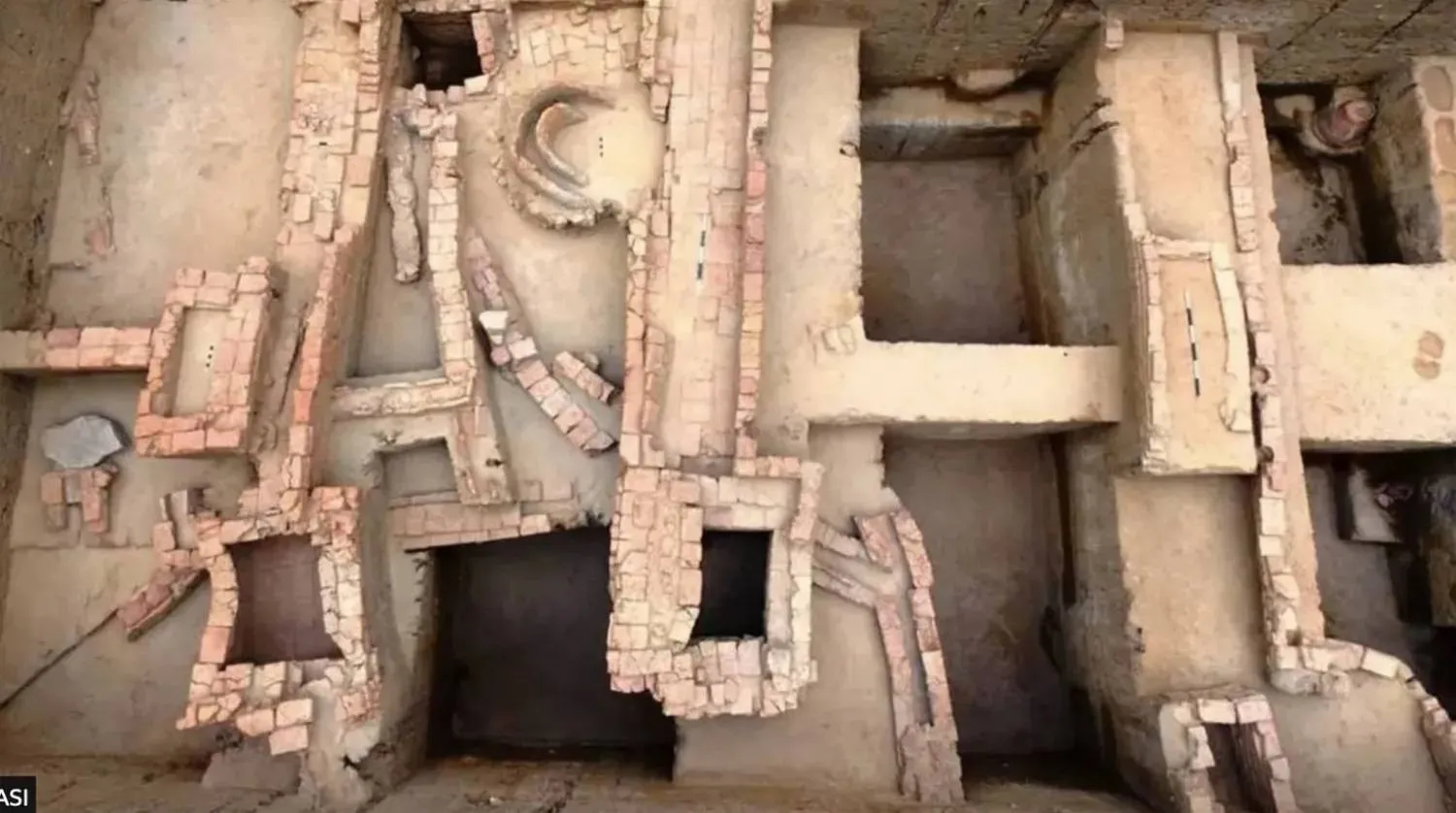The Keeladi village in India's southern Tamil Nadu state has unearthed archeological finds that have sparked a political and historical debate.
Amid coconut groves, a series of 15ft (4.5m) deep trenches reveal ancient artifacts buried in layers of soil - fragments of terracotta pots, and traces of long-lost brick structures, BBC reported on Monday.
Experts from the Tamil Nadu State Department of Archaeology estimate the artifacts to be 2,000 to 2,500 years old, with the oldest dating back to around 580 BCE. They say these findings challenge and reshape existing narratives about early civilization in the Indian subcontinent.
With politicians, historians, and epigraphists weighing in, Keeladi has moved beyond archaeology, becoming a symbol of state pride and identity amid competing historical narratives.
Yet history enthusiasts say it remains one of modern India's most compelling and accessible discoveries - offering a rare opportunity to deepen understanding of a shared past.
Keeladi, a village 12km (7 miles) from Madurai on the banks of the Vaigai river, was one of 100 sites shortlisted for excavation by Archaeological Survey of India (ASI) archaeologist Amarnath Ramakrishnan in 2013.
He selected a 100-acre site there because of its proximity to ancient Madurai and the earlier discovery of red-and-black pottery ware by a schoolteacher in 1975.
Ajay Kumar, leading the state archaeology team at Keeladi, said the key finds are elaborate brick structures and water systems - evidence of a 2,500-year-old urban settlement.
“This was a literate, urban society where people had separate spaces for habitation, burial practices and industrial work,” Kumar said, noting it's the first large, well-defined ancient urban settlement found in southern India.
William Daniel, a teacher from neighboring Kerala, said the discoveries made him feel proud about his heritage.
“It gives people from the south [of India] something to feel proud about, that our civilization is just as ancient and important as the one in the north [of India],” he said.
The politics surrounding Keeladi reflects a deep-rooted north-south divide - underscoring how understanding the present requires grappling with the past.
India's first major civilization, the Indus Valley, emerged in the north and central regions between 3300 and 1300 BCE. After its decline, a second urban phase, the Vedic period, rose in the Gangetic plains, lasting until the 6th Century BCE.
This phase saw major cities, powerful kingdoms and the rise of Vedic culture - a foundation for Hinduism. As a result, urbanization in ancient India is often viewed as a northern phenomenon, with a dominant narrative that the northern Aryans "civilized" the Dravidian south.
This is especially evident in the mainstream understanding of the spread of literacy.
It is believed that the Ashokan Brahmi script - found on Mauryan king Ashoka's rock edicts in northern and central India, dating back to the 3rd Century BCE - is the predecessor of most scripts in South and Southeast Asia.
Epigraphists like Iravatham Mahadevan and Y Subbarayalu have long held the view that the Tamil Brahmi script - the Tamil language spoken in Tamil Nadu and written in the Brahmi script - was an offshoot of the Ashokan Brahmi script.
But now, archaeologists from the Tamil Nadu state department say that the excavations at Keeladi are challenging this narrative.
“We have found graffiti in the Tamil Brahmi script dating back to the 6th Century BCE, which shows that it is older than the Ashokan Brahmi script. We believe that both scripts developed independently and, perhaps, emerged from the Indus Valley script,” Kumar said.
Epigraphist S Rajavelu, former professor of marine archaeology at the Tamil University, agrees with Kumar and said other excavation sites in the state too have unearthed graffiti in the Tamil Brahmi script dating back to the 5th and 4th Century BCE.
But some experts say that more research and evidence are needed to conclusively prove the antiquity of the Tamil Brahmi script.







